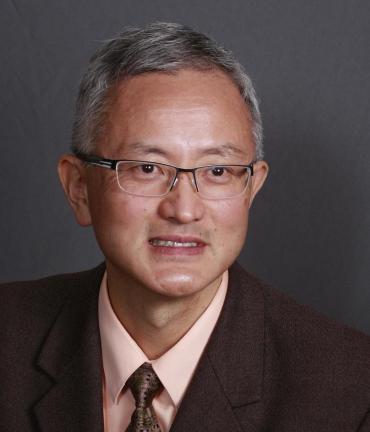
Anti-EGFRvIII synNotch Receptor Induced Anti-EphA2/IL-13Ralpha2 CAR (E-SYNC) T Cells
Summary
This is a first-in-human phase I study to assess the safety and feasibility of using an IV infusion of E-SYNC T cells to treat patients with EGFRvIII-mutated glioblastoma (GBM).
This study will enroll two different cohorts of GBM patients sequentially and is currently recruiting the first cohort of patients. Participants in cohort 1 must have newly diagnosed glioblastoma with the EGFRvIII mutation and unmethylated MGMT promoter and should be able to be treated within 12 weeks of completing postoperative radiotherapy.
How does this study work?
E-SYNC T cells are a novel chimeric antigen receptor (CAR) T-cell therapy developed at UCSF. A patient’s own T cells are programmed to attack tumor cells with two different molecular markers, or antigens. The first is a mutant protein that is only present the surface of some GBM cells called EGFRvIII. The second antigen is present at higher levels throughout the tumor but can also be found in other tissues in the body (either EphA2 or IL-13alpha2). Once the CAR T cells recognize tumor cells with the first antigen, they then activate to destroy cells with the second antigen. This two-step strategy leads to a more precise and robust immune response than traditional CAR T-cell therapies.
What to expect?
Patients will have their blood drawn so scientists can isolate their T cells. The researchers will then need about a month make the E-SYNC T cells. Once the cells are ready, patients will first receive a short course of chemotherapy, which depletes their existing T cells and primes their immune system to respond to the new genetically engineered T cells. A few days later, they will receive the E-SYNC T cells.
Patients will be closely monitored for the first 28 days after receiving the IV infusion of E-SYNC T cells to watch for dose-limiting toxicities. As a precaution, they will need to stay within an hour of the institution. For patients who live farther away than that, UCSF can provide the study participant and their caregiver funding to help cover the cost of local housing during this period.
- Age ≥ 18 years.
- Karnofsky performance status (KPS) score ≥ 70.
- All participants must have adequate organ function.
- Adequate bone marrow function is defined as:
- Peripheral absolute neutrophil ≥ 1000/mm3 and
- Platelet count ≥ 100,000/mm3 (transfusion independent, defined as not receiving platelet transfusions for at least 7 days prior to enrollment) and
- Absolute lymphocyte count (ALC) ≥ 300/uL or CD3 count of ≥150/uL
- Adequate renal function is defined as:
- Creatine clearance or radioisotope glomerular filtration rate ≥ 50 mL/min/1.73m2
- Adequate liver function is defined as:
- Total bilirubin ≤ 1.5 x ULN except for Gilbert's syndrome and
- Alanine aminotransferase (ALT) and aspartate aminotransferase (AST) ≤ 3 x ULN
- Adequate cardiac function is defined as:
- LVEF ≥ 40% by echocardiogram or multi-gated acquisition scanning (MUGA)
- Adequate pulmonary function, defined as no evidence of dyspnea at rest and pulse oximetry > 92% while breathing room air.
- Adequate bone marrow function is defined as:
- Pathological criteria: EGFRvIII+ GBM from most recent surgery, confirmed by a Clinical Laboratory Improvement Amendments (CLIA)-certified lab using a next-generation sequencing panel.
- MGMT promoter must be unmethylated or with a methylation index < 3.
- Must have completed at least SOC external beam radiotherapy (EBRT) as initial therapy.
- Participants must be anticipated to be able to complete E-SYNC T cell infusion within 12 weeks after completion of EBRT.
- All participants must be off systemic steroids for 3 days or more prior to leukapheresis.
- Must be willing to provide voluntary informed consent for Apheresis (and Tissue Screening if needed) and for study treatment.
For the most up-to-date list of criteria, please visit clinicaltrials.gov.
- Participant who has been treated with any investigational agents and chemotherapy ≤ 4 weeks prior to date of leukapheresis. Exceptions to this include: must be ≥ 23 days from last dose of TMZ or radiotherapy, just be ≥ 6 weeks from last dose of nitrosurea.
- Female participants of reproductive potential who are pregnant or lactating. Female study participants of reproductive potential must have a negative serum pregnancy test as part of eligibility confirmation.
- Known addiction to alcohol or illicit drugs.
- Prior treatment with EGFR-targeting therapy.
- Participants with leptomeningeal dissemination.
- Participants with a known disorder that affects their immune system, such as HIV or an autoimmune disorder requiring systemic cytotoxic or immunosuppressive therapy. Participants who are currently using non-systemic steroids (e.g., inhaled, intranasal, ocular, topical) are not excluded from the study.
- Participants with serologic status reflecting active hepatitis B or C infection. Patients that are positive for hepatitis B surface antigen (HBsAg+) will be excluded. Patients that are positive for hepatitis B core antibody or hepatitis C antibody must have a negative polymerase chain reaction (PCR) prior to enrollment. PCR positive patients will be excluded.
- Participants who have received prior solid organ or bone marrow transplantation.
- Uncontrolled intercurrent illness including, but not limited to, ongoing or active infection, symptomatic congestive heart failure, unstable angina pectoris, cardiac arrhythmia, second cancer currently receiving active treatment or anticipated to receive treatment within the next year, or psychiatric illness/social situations that would limit compliance with study requirements.
- Participants who are unable to return for follow-up visits or obtain follow-up studies required to assess toxicity to therapy.
For the most up-to-date list of criteria, please visit clinicaltrials.gov.

